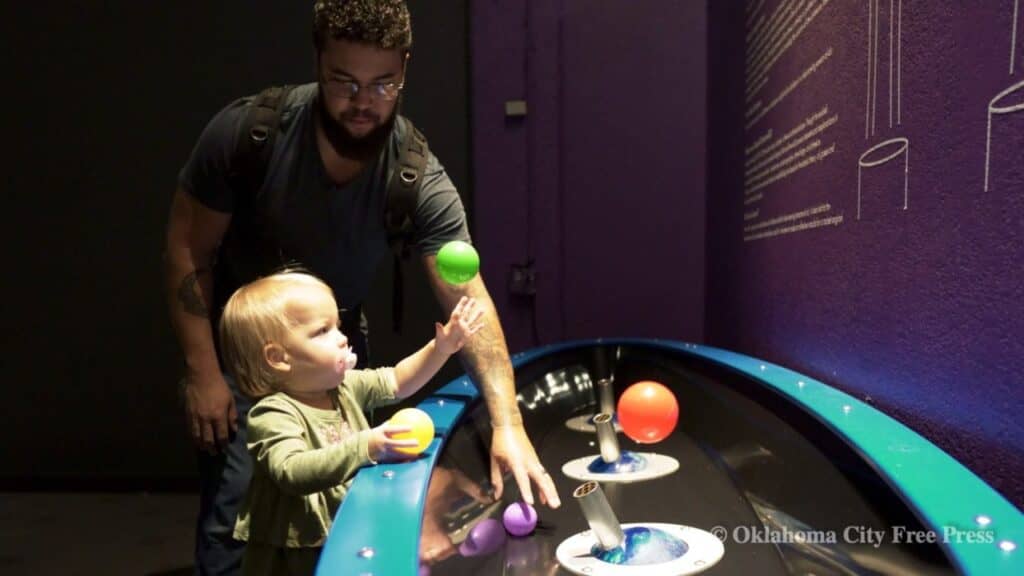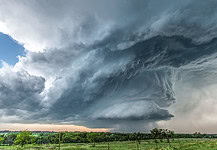Last Updated on January 15, 2023, 12:01 AM | Published: January 15, 2023
OKLAHOMA CITY — As one of Oklahoma City’s most loved and forward-thinking institutions, Science Museum Oklahoma is still reaching for the stars.
On December 6th of 2022, they officially broke ground on the long-planned effort to add a fully revamped, incomparably updated planetarium to the museum’s attractions thanks to a mammoth, multi-million dollar donation from Love’s Travel Stops.
The Love’s donation is one of the largest and most important sums that the museum has yet received, and it comes after a number of other recent funding announcements aimed at improving the museum and encouraging STEM education.
The final plans for the world-class planetarium wouldn’t be possible without an exceptionally large – and fully anonymous – donation a couple of years ago, and a brand new sponsorship agreement means that the museum will be able to take science directly to underserved children across the state.
Cutting-edge planetarium
Construction is finally underway on this longstanding dream of the Science Museum organizers, who have been developing plans for an entirely new, truly world-class planetarium for years.
“The thing that is going to make this so unique is the combination of a digital projector and an optical projector,” said Linda Maisch, SMO’s Vice President of Community Engagement. “That’s what makes this plan so special. There are only a handful of these in the entire world, and the closest one is in China.”

This marriage of digital and optical projection will create a stunningly accurate visualization of a real night sky in ways that would be impossible with either of the projection styles acting alone.
“A lot of planetariums just go with a digital projector, because that allows you to see that all those images that everybody loves to see, all the animation and the really fun stuff,” Maisch explained. “But digital projectors make lousy stars.”
When you’re putting in the effort to spark a lifelong love of science and astronomy in a classroom’s worth of children, you want realistic stars.
“An optical projector, on the other hand, can create twinkling stars because it’s real, natural light,” she continued. “So if you take both digital and optical projection and pair them together, and if you have the right technology, so that they can be synchronized, you get what looks like an actual night sky, and that’s what we’re going to have. And very few institutions are willing to make that investment.”
Complete overhaul
Early reports that the new planetarium would replace the museum’s long-established, spherical Omnidome theater had many expecting that the new projection technology would simply be set up to work on the same massive screen.
The reality is actually a complete teardown and rebuild of the now-former Omnidome space to make way for an entirely new, purpose-built planetarium structure.
“For starters, a dome like we had for the Omnidome is just not the right configuration for a planetarium,” Maisch explained. “A planetarium dome is a very specific, technical thing. So what we’re actually having to do is gut this whole structure and build a planetarium inside of where the old theater was.”

Of course, this also means that the museum’s long-loved, decades-old planetarium – located prominently in the middle of the main exhibition floor – will also be demolished, making way for a wealth of extra space for new exhibits and installations.
“This is really prime real estate,” Maisch said of the current planetarium’s central location. “And removing it also means that when you walk in the door, you’ll have pretty clear sightlines to the new planetarium.”
Historic donations
None of these developments would have been possible for the museum without two major donations in the past few years.
Love’s Travel Stops has donated $3.5 million for the planetarium project, even securing the naming rights for what will officially be the Love’s Planetarium.
But this project likely could not have ever taken these steps toward reality without an exceptionally generous anonymous donation in 2018 that allowed the museum to purchase the first digital elements for their existing planetarium.

“That anonymous donor coming forward and helping us with the digital equipment early on let us actually get to the point where we could get Love’s,” Maisch said. “If he hadn’t done that, I don’t know that we would have been ready to get to that step.”
Though construction has started and development is well underway, funding is still admittedly short of the required $8 million necessary for the complete planetarium project.
“Our development team is very actively meeting with people, and we still have a whole astronomy wing that we can sell the name to,” said SMO’s Assistant Communications Director Lindsey Morrison. “So we still have this other piece of the project that can be the ‘insert name here’ astronomy wing at Love’s Planetarium.”
Science everywhere
The planetarium project has been particularly high-profile and news-making for Science Museum Oklahoma, but it’s not the only new development they’ve been able to launch thanks to donor support.
With a generous sponsorship from OKC’s Dr. Elliott Schwartz and Pamela Shanklin, the museum will be providing the 100 Free Field Trips program, bringing the wonders of science and STEM education to students from Title 1 rural schools all over the state.

Additionally, they’ll be adding a recurring gardening program from February through May, continuing their monthly, adults-only SMO21 events, and expanding their art galleries and science-focused installations.
“We’re always working hard to keep things exciting and to keep programming fresh,” Maisch said. “We understand that the public’s always thirsty for the next thing.”
For tickets, event and programming schedules, and more information, visit smo.org.
To contribute a donation to the planetarium project, visit smo.org/donate.
Brett Fieldcamp has been covering arts, entertainment, news, housing, and culture in Oklahoma for nearly 15 years, writing for several local and state publications. He’s also a musician and songwriter and holds a certification as Specialist of Spirits from The Society of Wine Educators.











